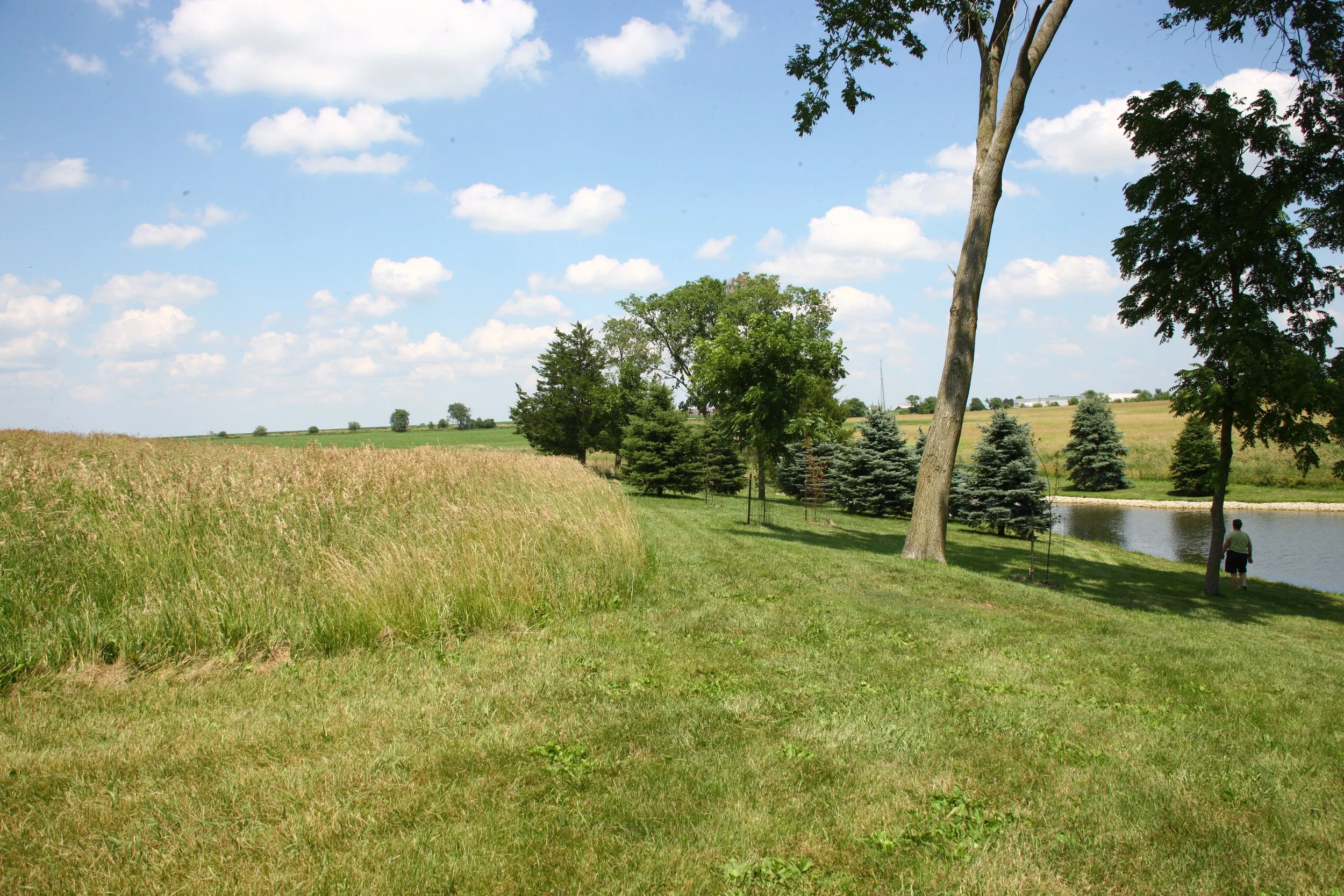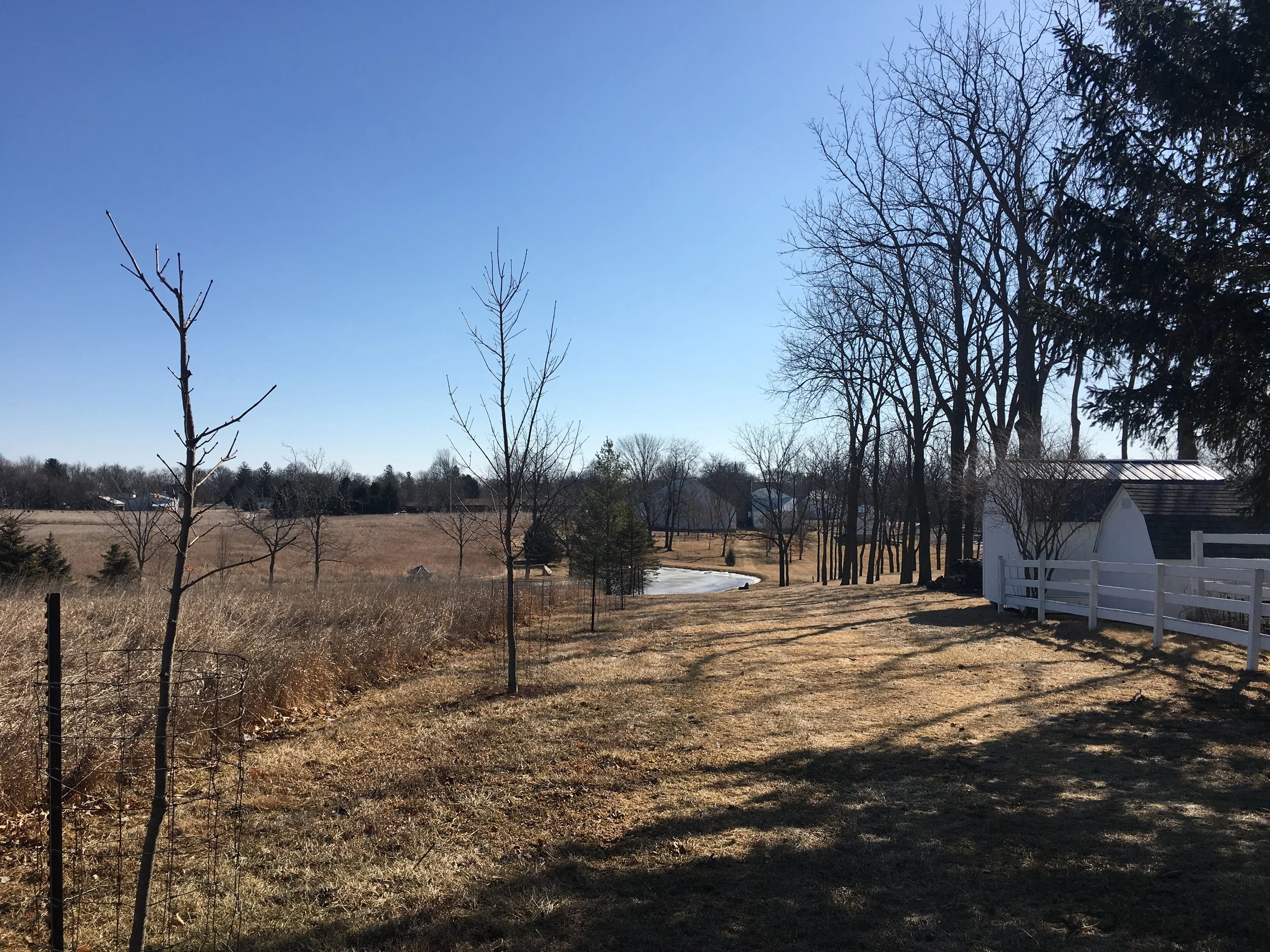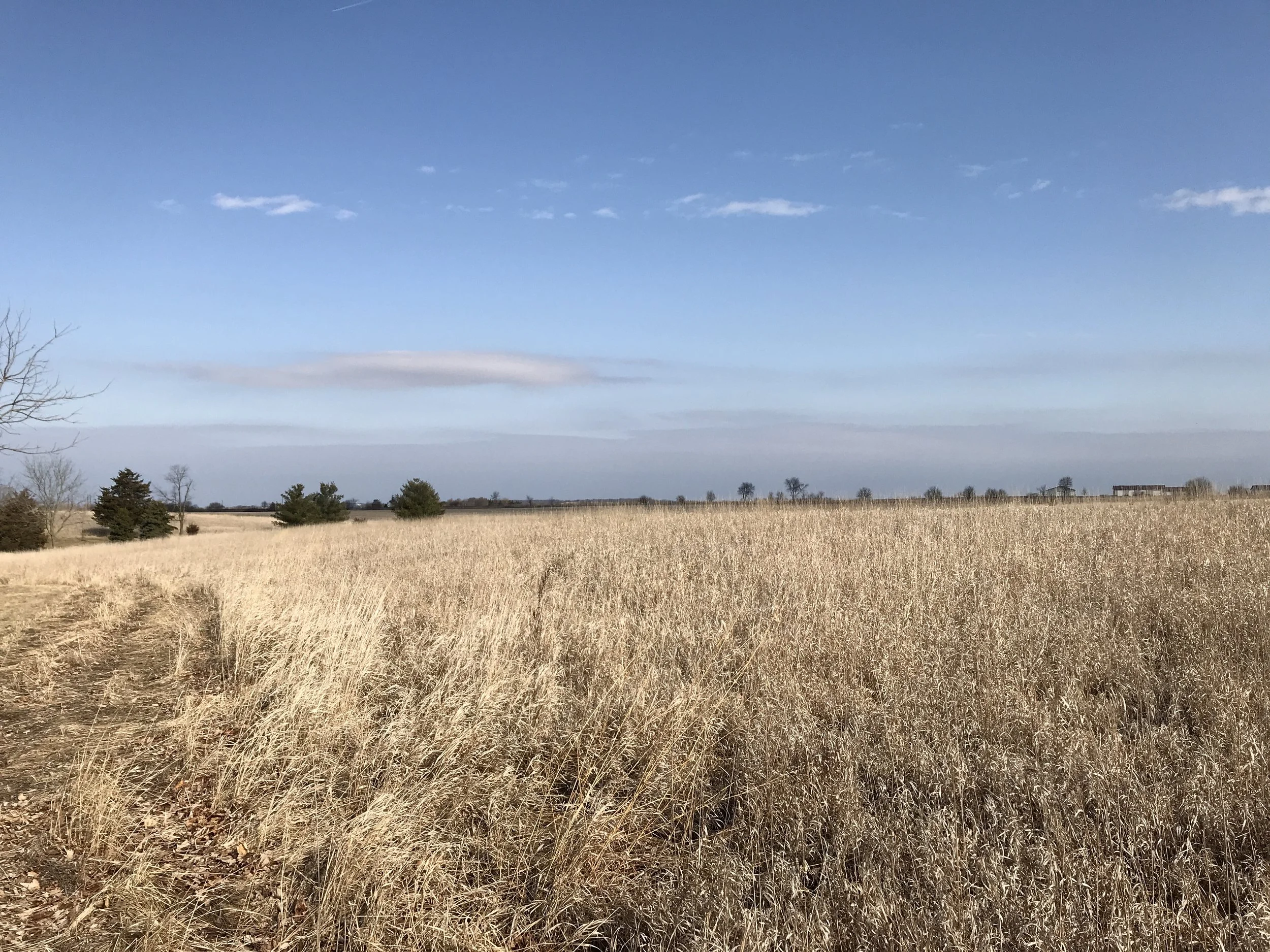Prairie Restoration
Pleasant Grove Heritage Park is launching a prairie reconstruction project on a 10-acre section. The aim of the project is to restore native tallgrass prairie to an area currently dominated by non-native plants. By reintroducing a diverse mix of native plants, this project seeks to improve ecological function, enhance biodiversity, and provide new opportunities for education and community engagement.
This land was previously enrolled in the Conservation Reserve Program (CRP), a voluntary federal program that pays landowners to take environmentally sensitive land out of farming and plant vegetation to improve water quality, reduce erosion, and support wildlife. Although the site remained undeveloped during its time in CRP, it is now mostly covered with invasive smooth brome grass and a few types of non-native clover, which provide limited habitat value. These plants were once commonly recommended for CRP projects, but planting smooth brome is now discouraged because it spreads aggressively and often forms a monoculture, crowding out other species.
This project will involve planting a highly diverse seed mix containing over 100 native species, with an emphasis on blooming tallgrass prairie plants. These species provide essential resources for pollinators, songbirds, and other wildlife, many of which are experiencing population declines due to habitat loss. In addition to supporting wildlife, native prairie vegetation has deep root systems that help stabilize soil, store carbon, and improve the infiltration and filtration of stormwater. Compared to non-native turf or pasture grasses, prairie plants are significantly more effective at sequestering carbon, contributing to long-term soil health and climate resilience.
Beyond its environmental benefits, the prairie reconstruction will serve the surrounding community in several important ways. Pleasant Grove Heritage Park is located directly adjacent to Meyers Meadow, an affordable housing community for senior citizens. Restoring the land to prairie will provide nearby residents with access to natural beauty, walking paths, and opportunities for outdoor recreation within walking distance. The site is also located just three blocks from the Lisbon Elementary, Middle, and High School campus and is less than ten minutes from schools in the Mount Vernon district. Teachers at Lisbon Community Schools have already expressed interest in using the site for outdoor classroom activities focused on ecology, biology, and conservation. Faculty from Cornell College have also indicated interest in using the area for research and student fieldwork.
The project is currently in the early planning phase. The first step is a comprehensive biodiversity survey to document existing plant and animal species. This baseline data will inform future restoration efforts and provide a point of comparison for measuring success over time. Site preparation and seed selection will follow, with a strong focus on using locally adapted native plant species to ensure long-term success. The current plan is to complete the prairie reconstruction in three sections, beginning with the western section by prepping the site this fall (2025) and seeding by January 2026.
As the communities of Lisbon and Mount Vernon continue to grow, projects like the Pleasant Grove Heritage Park prairie reconstruction become increasingly important. As development pressures increase, preserving and restoring natural spaces ensures that residents continue to have access to the ecological and recreational benefits they provide. This project represents an investment in both environmental sustainability and community well-being, helping to protect natural resources while fostering a stronger connection between people and the landscape around them.
This year, we’re using iNaturalist to document the present species diversity of plants, animals, and fungi at Pleasant Grove Heritage Park as part of our preparation for prairie restoration. By participating, you can help us create a valuable record of the species that call this area home!
What is iNaturalist?
iNaturalist is a free, easy-to-use platform that allows anyone—whether you’re a seasoned naturalist or a curious beginner—to document and identify species in the world around you. Observations contribute to a global database used by scientists, conservationists, and land managers to understand biodiversity and track environmental changes over time.
How to Use the iNaturalist Mobile App:
Download the App – Search for iNaturalist in the App Store (iOS) or Google Play (Android) and install it on your phone.
Create an Account – Sign up for free or log in if you already have an account.
Make an Observation:
Open the app and tap “Observe” (camera icon).
Take a clear photo of the species you want to document (plants, animals, fungi, insects, etc.). You can also upload photos from your gallery.
Add basic details like location and time (the app will autofill these if you have location services enabled).
Get Identifications – If you’re unsure what you found, the app’s AI suggestions and the iNaturalist community can help you identify it.
Submit Your Observation – Once uploaded, your observation becomes part of a global biodiversity database!
Why Participate?
By using iNaturalist at Pleasant Grove Heritage Park, you’re helping us:
Understand the ecosystem before prairie restoration begins.
Track changes in biodiversity over time.
Engage the community in hands-on conservation efforts.
Learn more about the plants and wildlife in your own backyard!
We invite you to explore, document, and share your discoveries! Every observation contributes to a deeper understanding of this special landscape. Join us in making a difference—one observation at a time!










